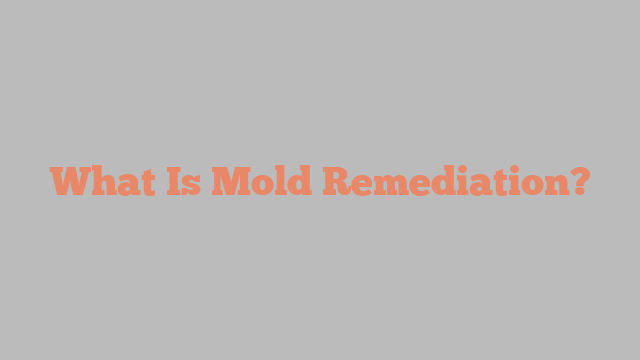Mold Remediation
The process of restoring a home or business after it has been affected by mold is known as mold remediation. The goal of this process is to safely remove and clean any items that have been contaminated with mold and return the environment to normal fungal ecology. This includes restoring the air quality to healthy levels.
Mold remediation is usually carried out by a certified mold professional. It may involve several steps, depending on the size of the affected area and the type of materials involved. It should also include steps to permanently correct the water or moisture problem, and proper use of personal protective equipment (PPE) when working in areas containing mold growth.
A professional will test the air and surfaces in the contaminated area to determine whether any health risks exist for building occupants. These tests should be conducted prior to beginning the remediation process. In addition, a detailed plan for the cleanup should be established. This should contain the use of PPE, how to prevent cross-contamination between a contaminated area and other parts of the building, and a method for disposing of contaminated building materials.
If a person is exposed to large amounts of mold spores, they can become ill. This is because the spores can cause an allergic reaction in some people. In order to keep spores from contaminating the rest of the building, it is important to isolate the impacted area. This is typically done by creating an airlock for entry and exit to and from the contaminated area. A double layer of polyethylene is typically used to form a barrier between the moldy area and other parts of the building.

What Is Mold Remediation?
Any porous materials contaminated with mold must be removed from the impacted area. This can include carpeting and carpet padding, drywall, wallpaper, and some furniture. This is because porous materials do not easily dry and can remain a source of contamination in the future. This is especially true for wood, which absorbs and retains moisture and can continue to grow mold if it becomes wet.
Non-porous materials contaminated with mold must be vacuumed and scrubbed to clean them. This is because mold spores can easily be dispersed into other areas of the building by brushing or wiping a contaminated surface. It is important to use a biocide in this step to kill any remaining fungus and help to prevent it from growing back.
Once all of the moldy material has been removed, the building must be cleaned and disinfected. This is typically done using a combination of cleaning products, antimicrobials and deodorizers. The building must also be allowed to dry completely. This is because any remaining moisture can cause a new outbreak of mold. After the building has been cleaned and disinfected, it is safe to reoccupy. However, it is best to contact a medical professional for a referral to a practitioner who is knowledgeable about mold and fungus exposure.
